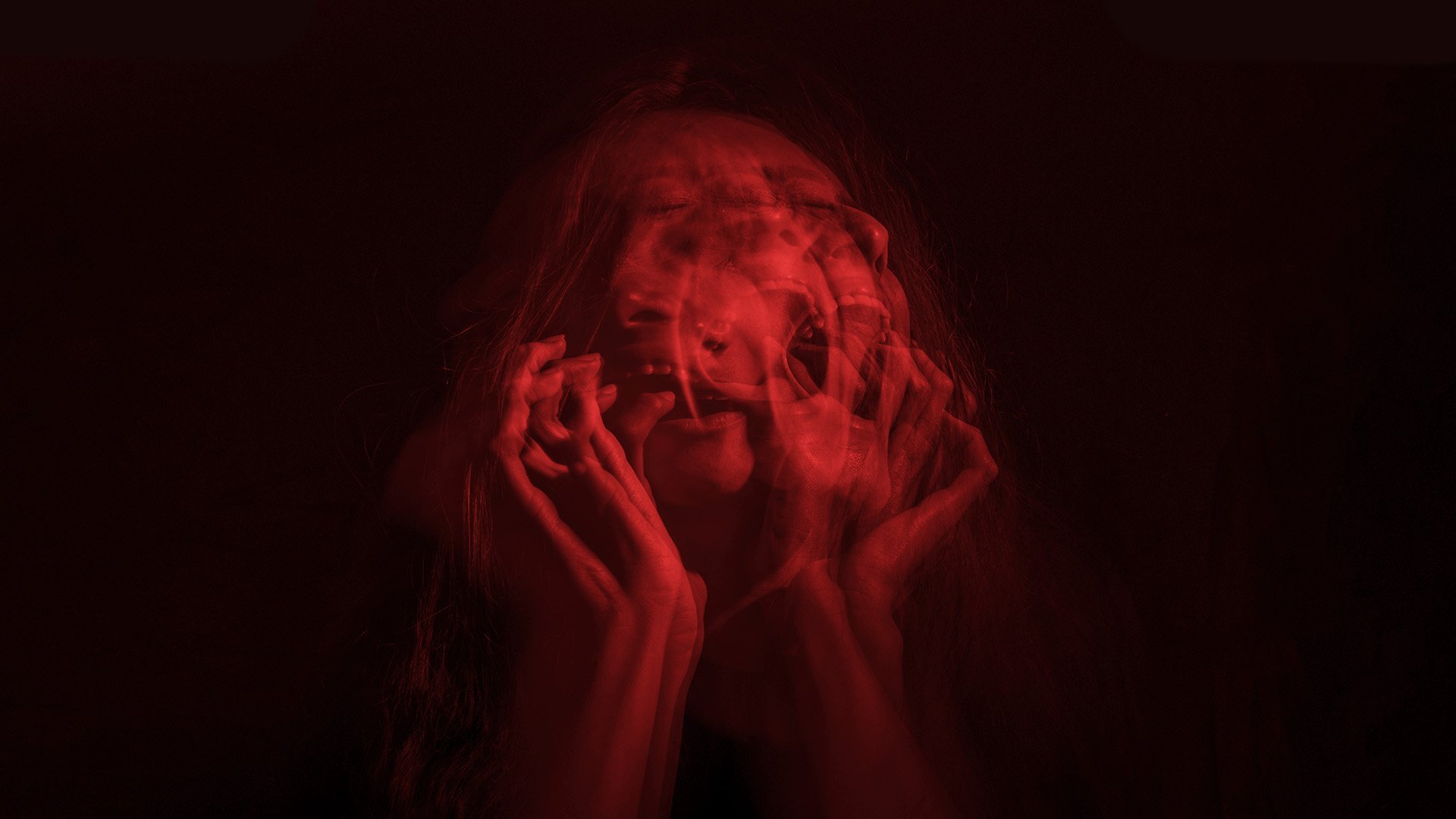
Demonic possession has fascinated and terrified people for centuries. From ancient texts to modern movies, tales of spirits taking over human bodies have sparked curiosity and fear. But what exactly is demonic possession? Demonic possession refers to the belief that a person's body can be controlled by an evil spirit or demon. This concept appears in many cultures and religions, each with its own interpretations and rituals for dealing with it. Some see it as a mental illness, while others believe it’s a genuine supernatural event. Whether you're a skeptic or a believer, understanding the history, symptoms, and stories behind demonic possession can be both intriguing and chilling. Ready to dive into the eerie world of demonic possession? Let's get started!
Key Takeaways:
- Demonic possession, a belief in evil spirits controlling individuals, has been present in various cultures and religions for centuries, with documented cases and cultural depictions influencing public perceptions.
- While some believe in demonic possession, skeptics argue that scientific and medical explanations, such as mental illness and mass hysteria, offer alternative perspectives. The future may bring new understandings and approaches to this phenomenon.
What is Demonic Possession?
Demonic possession is a phenomenon where an individual is believed to be controlled by an evil spirit or demon. This concept has been present in various cultures and religions for centuries. Here are some intriguing facts about demonic possession:
-
Ancient Beliefs: Many ancient civilizations, including the Egyptians, Greeks, and Romans, believed in demonic possession. They often attributed unexplained illnesses or behaviors to evil spirits.
-
Religious Texts: The Bible contains numerous references to demonic possession. In the New Testament, Jesus is described as casting out demons from possessed individuals.
-
Exorcism Practices: Exorcism, the ritual to expel demons, has been practiced for centuries. Different religions have their own methods and prayers for performing exorcisms.
-
Symptoms of Possession: Common symptoms include sudden personality changes, speaking in unknown languages, and exhibiting superhuman strength.
-
Scientific Explanations: Some scientists believe that what is perceived as demonic possession could be mental illnesses like schizophrenia or dissociative identity disorder.
Historical Cases of Demonic Possession
Throughout history, there have been numerous documented cases of demonic possession. These cases often garnered significant attention and sometimes led to tragic outcomes.
-
The Loudun Possessions: In 1634, a group of nuns in Loudun, France, claimed to be possessed by demons. The incident led to the execution of a local priest, Urbain Grandier, who was accused of witchcraft.
-
The Salem Witch Trials: During the Salem witch trials in 1692, several individuals were accused of being possessed by demons. This led to the execution of 20 people and the imprisonment of many others.
-
Anneliese Michel: In the 1970s, a German woman named Anneliese Michel underwent 67 exorcisms. She died from malnutrition, and her parents and priests were later convicted of negligent homicide.
-
The Smurl Haunting: In the 1980s, the Smurl family in Pennsylvania claimed their house was haunted by demons. The case was investigated by famous paranormal investigators Ed and Lorraine Warren.
-
The Exorcism of Robbie Mannheim: This case inspired the famous novel and movie "The Exorcist." In the late 1940s, a boy known as Robbie Mannheim underwent a series of exorcisms in Maryland.
Cultural Depictions of Demonic Possession
Demonic possession has been a popular theme in literature, movies, and other forms of media. These depictions often shape public perceptions of possession.
-
The Exorcist: Released in 1973, "The Exorcist" is one of the most famous movies about demonic possession. It was based on the real-life exorcism of Robbie Mannheim.
-
The Conjuring Series: This film series, based on the investigations of Ed and Lorraine Warren, features several cases of demonic possession and exorcism.
-
The Amityville Horror: This book and subsequent movies tell the story of the Lutz family, who claimed their house was haunted by demons after a series of murders.
-
Paranormal Activity: This found-footage horror film series explores demonic possession and its impact on families.
-
Supernatural: The TV show "Supernatural" frequently features episodes involving demonic possession and exorcism rituals.
Modern-Day Beliefs and Practices
Despite advances in science and medicine, belief in demonic possession persists in many parts of the world. Modern practices often blend traditional rituals with contemporary understanding.
-
Catholic Exorcists: The Catholic Church still trains and appoints exorcists. In 2018, the Vatican held a week-long course on exorcism due to increased demand.
-
Deliverance Ministries: Some Christian groups practice deliverance, a form of exorcism that involves prayer and counseling to expel demons.
-
Cultural Variations: Different cultures have unique beliefs and practices regarding demonic possession. For example, in some African and Caribbean traditions, possession is seen as a form of communication with spirits.
-
Media Influence: Movies and TV shows about demonic possession often influence public beliefs and fears about the phenomenon.
-
Skepticism and Criticism: Many skeptics argue that demonic possession is a cultural construct and that supposed cases can be explained by psychological or medical conditions.
Psychological and Medical Perspectives
Modern psychology and medicine offer alternative explanations for behaviors traditionally attributed to demonic possession.
-
Mental Illness: Conditions like schizophrenia, bipolar disorder, and dissociative identity disorder can cause symptoms that resemble possession.
-
Mass Hysteria: In some cases, what appears to be demonic possession may be a result of mass hysteria, where a group of people exhibit similar symptoms due to psychological contagion.
-
Neurological Disorders: Some neurological conditions, such as epilepsy, can cause seizures and other behaviors that might be mistaken for possession.
-
Cultural Influence: Beliefs about possession can influence how people interpret and respond to certain behaviors, leading to misdiagnosis.
-
Therapeutic Approaches: Some therapists use techniques like cognitive-behavioral therapy to help individuals who believe they are possessed.
Famous Exorcists and Their Stories
Exorcists play a crucial role in the narrative of demonic possession. Some have gained fame for their work and the stories they tell.
-
Father Gabriele Amorth: Known as the Vatican's chief exorcist, Father Amorth claimed to have performed over 70,000 exorcisms during his lifetime.
-
Ed and Lorraine Warren: This husband-and-wife team of paranormal investigators worked on several famous cases of demonic possession, including the Amityville Horror and the Enfield Poltergeist.
-
Father Malachi Martin: A former Jesuit priest, Father Martin wrote several books about demonic possession and exorcism, including "Hostage to the Devil."
-
Reverend Bob Larson: An American evangelist, Reverend Larson has performed thousands of exorcisms and hosts a radio show about spiritual warfare.
-
Father José Antonio Fortea: A Spanish priest and theologian, Father Fortea has written extensively about exorcism and demonic possession.
Controversies and Ethical Concerns
The practice of exorcism and the belief in demonic possession raise several ethical and legal issues.
-
Abuse and Neglect: Some exorcisms have led to physical and psychological harm, including cases where individuals died due to neglect or abuse.
-
Legal Implications: In some countries, exorcism practices have led to legal action against those performing them, especially when harm is involved.
-
Mental Health: Critics argue that exorcism can exacerbate mental health issues by reinforcing delusions and preventing individuals from seeking proper medical treatment.
-
Cultural Sensitivity: The practice of exorcism can sometimes clash with cultural beliefs and practices, leading to misunderstandings and conflict.
-
Informed Consent: Ensuring that individuals undergoing exorcism fully understand and consent to the process is a significant ethical concern.
The Future of Demonic Possession Beliefs
As society evolves, so do beliefs and practices related to demonic possession. The future may hold new understandings and approaches.
-
Interdisciplinary Research: Collaboration between theologians, psychologists, and medical professionals could lead to a more comprehensive understanding of possession phenomena.
-
Technological Advances: Advances in neuroscience and psychology may provide new insights into the brain and behavior, potentially explaining some cases of possession.
-
Cultural Shifts: As cultures continue to interact and blend, beliefs about demonic possession may change or evolve.
-
Media Representation: Ongoing media portrayals of demonic possession will likely continue to shape public perceptions and beliefs.
-
Education and Awareness: Increasing awareness and education about mental health and cultural practices can help reduce stigma and promote understanding of demonic possession.
Final Thoughts on Demonic Possession
Demonic possession has fascinated and terrified people for centuries. From ancient texts to modern movies, the idea of an evil spirit taking control of a human body stirs up a mix of fear and curiosity. Some believe these stories are just myths or psychological issues, while others swear by their reality.
Understanding the history, cultural impact, and scientific perspectives on possession helps us see the bigger picture. Whether you’re a skeptic or a believer, these facts offer a glimpse into a world that’s both mysterious and unsettling.
Stay curious and keep questioning. The more we learn, the better we understand the unknown. Demonic possession might remain a mystery, but exploring it can teach us a lot about human nature and our deepest fears.
Frequently Asked Questions
Was this page helpful?
Our commitment to delivering trustworthy and engaging content is at the heart of what we do. Each fact on our site is contributed by real users like you, bringing a wealth of diverse insights and information. To ensure the highest standards of accuracy and reliability, our dedicated editors meticulously review each submission. This process guarantees that the facts we share are not only fascinating but also credible. Trust in our commitment to quality and authenticity as you explore and learn with us.


